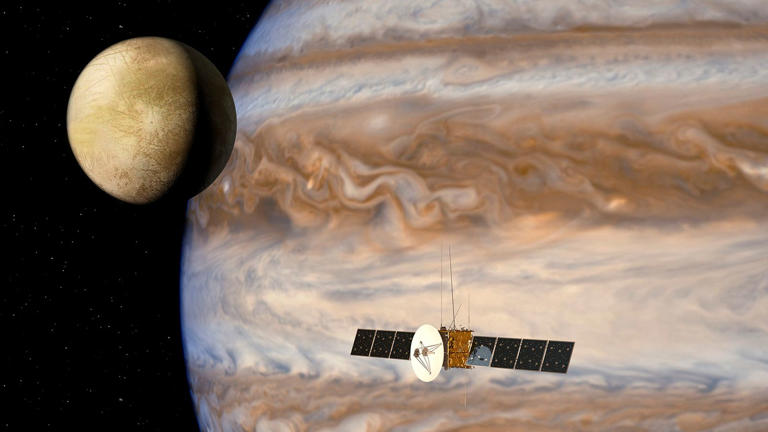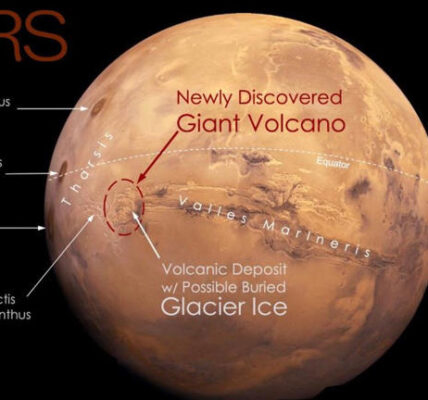NASA Swim-Bots Europa Exploration: A Groundbreaking Search for Alien Life
NASA Swim-Bots Europa Exploration aims to uncover alien life in the icy depths of Jupiter’s moon Europa using advanced swimming robots designed for space exploration.
When searching for extraterrestrial life, the principle of “follow the water” has guided astrobiologists for decades. Now, NASA is taking this approach further with the NASA Swim-Bots Europa Exploration, a mission designed to send tiny swimming robots beneath the icy crust of Jupiter’s moon Europa. These robots aim to detect signs of life in the vast subsurface oceans, where conditions may be suitable for life to thrive.

Why Europa Is the Focus of NASA Swim-Bots Europa Exploration
Europa, one of Jupiter’s moons, is a prime candidate in the search for alien life due to its vast subsurface oceans. Evidence suggests that Europa holds more liquid water than all of Earth’s oceans combined. The moon’s geological activity could warm these underwater seas, churn nutrients, and create the right conditions for life.
NASA Swim-Bots Europa Exploration: How It Works
The NASA Swim-Bots Europa Exploration project, officially called Swim (Sensing with Independent Micro-swimmers), is designed to deploy a swarm of small swimming robots into Europa’s subsurface oceans. These robots, smaller than traditional probes, will autonomously navigate and collect data from a much larger area.
Each swim-bot is initially 16.5 inches (42 cm) long and weighs about 5 pounds (2.3 kg). However, NASA engineers aim to miniaturize them further to roughly the size of a mobile phone. The robots will be housed inside a nuclear-powered thermal drill, called a cryobot, which will melt through Europa’s 10-mile-thick ice crust to create a passage to the ocean below.
Once deployed, the swarm will autonomously explore the subsurface waters. They will use sonar-based communication to send data back to the cryobot, which will relay the information to a surface lander.
Key Features and Challenges of NASA Swim-Bots Europa Exploration
The swim-bots are equipped with advanced sensors to measure:
- Temperature
- Pressure
- Acidity or alkalinity
- Conductivity
- Chemical composition
These technologies, adapted from Earth’s glacier research, must withstand Europa’s extreme conditions. The saltwater ocean lies under immense pressure, and the robots must remain operational despite the frigid environment and the long journey of over 600 million kilometers from Earth.
Dr. Schaler highlights these challenges: “Miniaturization, localization, and underwater communication are all difficult tasks. The final design must account for the harsh environment of Europa’s ocean.”
Prototype Testing and Progress
Prototype testing for the NASA Swim-Bots Europa Exploration has been promising. Early versions of the swim-bots, made from 3D-printed plastic, have shown excellent maneuverability and autonomy during trials in swimming pools at Caltech in Pasadena. These successful tests mark a significant step toward realizing the mission’s goals.
Upcoming Missions to Inform NASA Swim-Bots Europa Exploration
NASA’s Europa Clipper mission, launched in October, will provide vital data about Europa’s surface and subsurface conditions. Scheduled to arrive in 2030, the Clipper will conduct 49 flybys to determine if Europa’s oceans can support life. Similarly, the European Space Agency’s Jupiter Icy Moons Explorer (Juice) spacecraft, expected to arrive in 2034, will further evaluate the moon’s habitability.
If these missions confirm favorable conditions, the NASA Swim-Bots Europa Exploration could proceed to revolutionize humanity’s search for extraterrestrial life.
The Future of NASA Swim-Bots Europa Exploration
The NASA Swim-Bots Europa Exploration represents a monumental step in understanding whether life exists beyond Earth. By delving into Europa’s hidden oceans, these advanced robots could uncover answers to one of humanity’s greatest questions: Are we alone in the universe?



